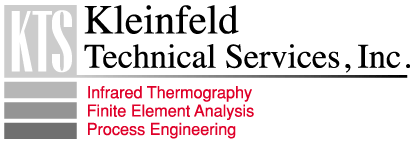When, Why and How to Use Heat Transfer Analysis
Sponsored by:

When, Why and How to Use Heat Transfer Analysis
Thermographers routinely observe thermal patterns and measure temperatures across the surface of objects. Understanding heat transfer can greatly enhance one’s ability to diagnose observed thermal patterns and knowledge of how and when infrared inspections should be performed.
By calculating the heat transfer characteristics of the system being observed, a thermographer can increase his/her understanding of the information that thermal imaging is providing. The thermographer can also benefit by understanding what may need to be done to the subject system in order to generate a thermal signature for the features of interest.
For active infrared thermography, common in NDT examinations, heat transfer analysis will indicate where and how much heat to apply, for what amount of time, and the appropriate time for imaging. For systems with simple geometry and steady state conditions or simple time transients, heat transfer can be calculated manually
For complex systems, finite element analysis (FEA) provides a more powerful approach. FEA allows modeling of complex geometry and complex time relationships and boundary conditions. FEA can provide clear results that enable thermographers to be more efficient and profitable while expanding their range of applications.
FEA based heat transfer analysis can handle convection, conduction, and radiation based heat transfer and also extends to include fluid flow applications. Having a third party provide this analysis is often the best alternative. This can be someone who is in-house in a large company or an outside source such as a consulting firm.

Tip submitted by Jack Kleinfeld, P. E.
Kleinfeld Technical Services, Inc.
” We Know IR and Do FEA.”SM

